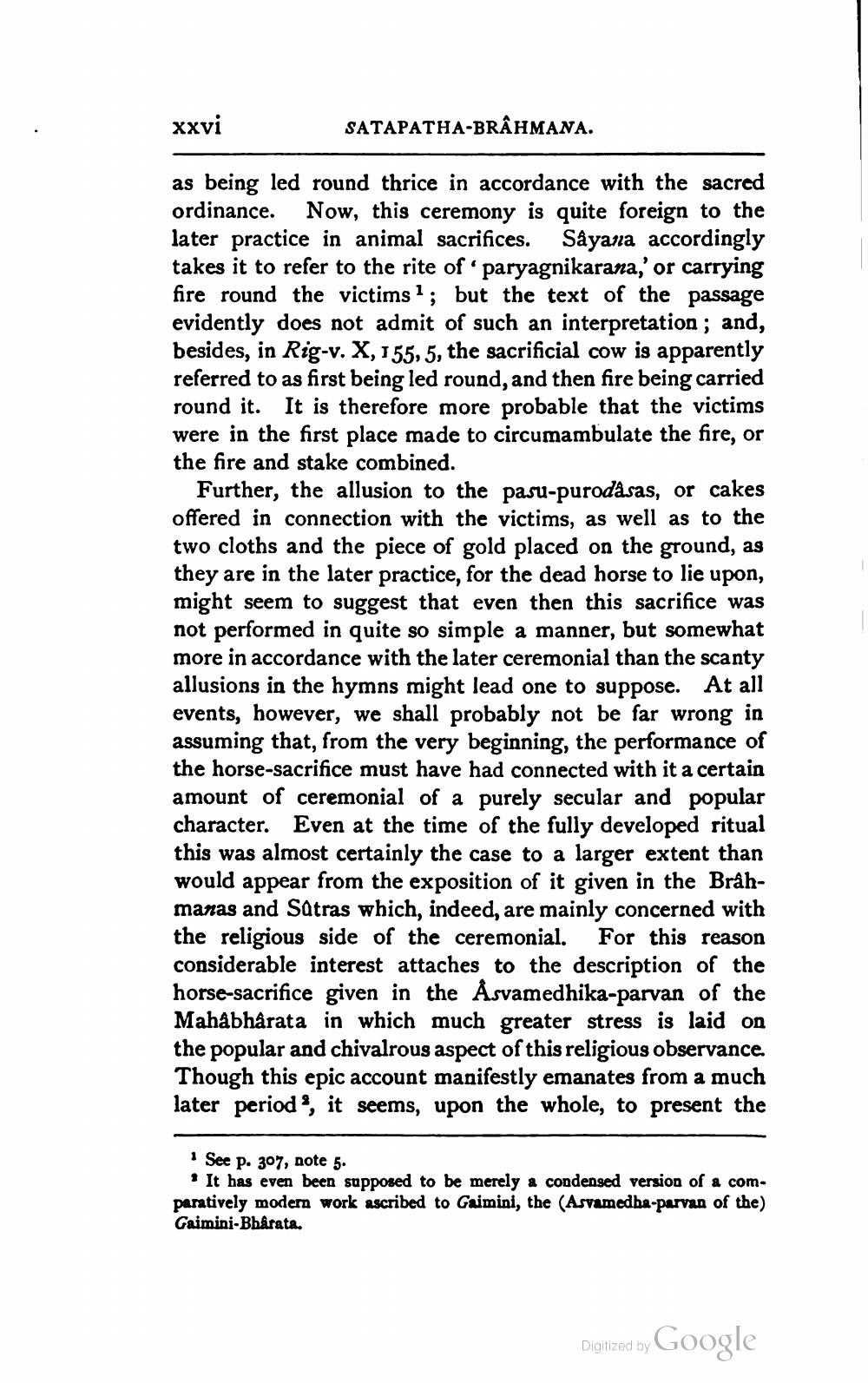________________
xxvi
SATAPATHA-BRAHMANA.
as being led round thrice in accordance with the sacred ordinance. Now, this ceremony is quite foreign to the later practice in animal sacrifices. Sâyana accordingly takes it to refer to the rite of paryagnikarana,' or carrying fire round the victims1; but the text of the passage evidently does not admit of such an interpretation; and, besides, in Rig-v. X, 155, 5, the sacrificial cow is apparently referred to as first being led round, and then fire being carried round it. It is therefore more probable that the victims were in the first place made to circumambulate the fire, or the fire and stake combined.
Further, the allusion to the pasu-purodasas, or cakes offered in connection with the victims, as well as to the two cloths and the piece of gold placed on the ground, as they are in the later practice, for the dead horse to lie upon, might seem to suggest that even then this sacrifice was not performed in quite so simple a manner, but somewhat more in accordance with the later ceremonial than the scanty allusions in the hymns might lead one to suppose. At all events, however, we shall probably not be far wrong in assuming that, from the very beginning, the performance of the horse-sacrifice must have had connected with it a certain amount of ceremonial of a purely secular and popular character. Even at the time of the fully developed ritual this was almost certainly the case to a larger extent than would appear from the exposition of it given in the Brâhmanas and Sutras which, indeed, are mainly concerned with the religious side of the ceremonial. For this reason considerable interest attaches to the description of the horse-sacrifice given in the Asvamedhika-parvan of the Mahabharata in which much greater stress is laid on the popular and chivalrous aspect of this religious observance. Though this epic account manifestly emanates from a much later period, it seems, upon the whole, to present the
1 See p. 307, note 5.
It has even been supposed to be merely a condensed version of a comparatively modern work ascribed to Gaimini, the (Asvamedha-parvan of the) Gaimini-Bharata.
Digitized by
Google




